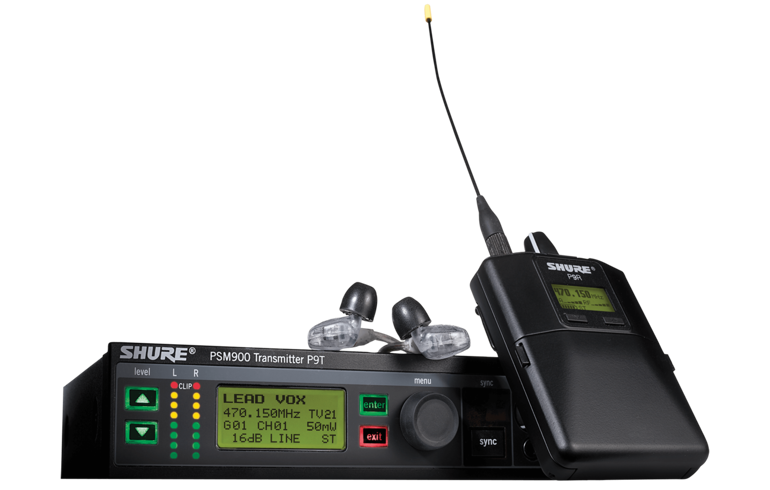by Mike Sessler, ChurchTechArts.org
For the last few months, we've been having problems with one of our wireless IEMs. It's a PSM900, and while it generally provides good service, it occasionally just drops out for a split second. We've tried a bunch of things to fix it; swapping frequencies, antennas, even changing positions of the transmitter. But we still get these random drop outs. They don't seem to be RF hits per se, as we've done multiple scans and fully coordinated our frequencies between the 900 and our two channels of PSM1000 (the only other thing we have in that range).
I was about ready to send it in for service this weekend, when I recalled an idea that one of my Shure friends suggested at NAB; lower the transmit power. Whereas the PSM1000 has automatic RF attenuation built-in to the receiver to guard against overpowering it, the 900 does not. I thought we were transmitting at 10 mW, but when I checked the transmitter between services, it showed we were at 50 mW.
So, just for fun, I dropped the power to 10 and stood back to see what would happen. After the service...
...I asked the vocalist if she had experienced any dropouts during that service. "Nope! None. It was perfect." So there you go.
The theory is simple; the RF input of a wireless receiver can be overloaded, just like a microphone preamp. When you overload a mic preamp, it distorts. When you overload an RF front-end, it drops out for a split second. The easiest solution is to drop the transmit power, or move the transmitter further away. In our case, out transmit antenna (just a 1/2 wave on the front of the rack) is only about 30' away from the vocalists. At 50 mW, we were sending it too much power.
If you're having issues with wireless IEMs or mic's taking random hits, you might think that turning up the transmit power will fix it. However, it could actually make it worse. If you have RF issues, first make sure you're using clear frequencies by using the unit's scan function. Most wireless mic's will not scan and auto-select open frequencies for you.
Next, make sure you are selecting frequencies that are free from 2 to 3 intermodulations. If you don't know what that is, here is a simple definition: It's when two channels operating in close proximity combine to form a third frequency, and that third frequency is one you are trying to use. If you stick with suggested frequencies from the manufacturer, you'll likely steer clear of those.
Or if you have it available, use the software made by the manufacturer for such a purpose. As a bonus, the upcoming version of Wireless Workbench 6 from Shure includes frequencies and tuning from almost every major mic manufacturer, so you can use that to coordinate frequencies, even if you can't use it to scan with your equipment. At least you can verify the selected frequencies will work together.
Finally, try dropping the power. Wireless products are amazingly efficient and you don't always need to blast out 100 mW to make them work. Sometimes you do, but often times, the lowest transmit power will deliver the best results (not to mention extend battery life - at least in mic's).
Wireless can be tricky business; and it's only going to get worse. No time like the present to bone up on your RF skills.
A Quick RF Tip for Wireless Gear

